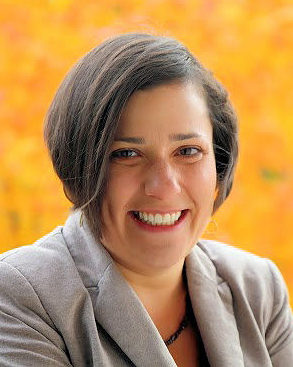Money to Ease the Way for Students Pursuing STEM Degrees
December 3, 2013

Sara Goldrick-Rab
Hundreds of college students across Wisconsin will receive $1,000 per year for up to five years as part of an experimental study that aims to determine how financial aid affects the academic pathways of undergraduate students, particularly those pursuing degrees in science, technology, engineering and mathematics (STEM).
A recent report from the Department of Education revealed that 48 percent of bachelor’s degree students and 69 percent of associate’s degree students who enter STEM majors leave college without a degree in those majors. Students from low-income families who begin college intending to major in a STEM field but who end up switching majors or dropping out of school are particularly high, said UW-Madison Associate Professor of Educational Policy Studies and Sociology Sara Goldrick-Rab. Goldrick-Rab is also a researcher with the Wisconsin Center for Education Research (WCER), part of UW-Madison’s School of Education.
“The STEM pipeline is leaking, and this is especially true for students from low-income families. Their chances of persisting and completing a STEM major are particularly low,” Goldrick-Rab said. “This threatens the capacity and economic diversity of the future workforce, and is a matter of significant policy concern.”
Goldrick-Rab has received a $1.5 million grant from the National Science Foundation and, and the project will receive additional support from the Great Lakes Higher Education Guaranty Corporation, which will be providing up to $4 million to fund the grants to students. Goldrick-Rab’s team will examine whether providing undergraduates from moderate and low-income families with more money, in the form of grant aid, can enable them to maintain their commitment to STEM majors and graduate with degrees in those fields.
“We know that students majoring in STEM fields are often required to do extensive homework and spend long hours working in groups and meeting with professors outside of class hours. Their courses also demand books and materials that aren’t cheap. Typical financial aid packages are usually too small to cover all of these costs, and when their families lack the financial resources to make up the difference, these students try to juggle long hours at work or skip purchasing their school supplies. While more grant aid is unlikely to be the only answer to increasing STEM success, it is a common strategy—and yet we don’t know much about its effectiveness,” Goldrick-Rab said.
The study will involve 2,000 students from Wisconsin who are attending one of 10 public and private institutions of higher education inside the Badger State, beginning with next fall’s incoming freshman class. One thousand of the students, all from moderate and low-income families, will be given $1,000 per year, while the remainder will be tracked but not given additional financial resources. All of the students in the study will be chosen based on their interest in pursuing a STEM major and their high school preparation for college work in STEM. They will not have to apply for the additional financial aid, and only those chosen to receive it will be informed about the program. Goldrick-Rab hopes to have initial results ready for release by the end of 2015, although full results will not be ready before the students have the opportunity to finish college, between 2018-2020.
“There’s nothing complicated about it. There will be an extra $1,000 integrated into the aid packages of hundreds of students, and they can receive that money for up to five years,” Goldrick-Rab said. “We want to compare outcomes of those students to those who were not selected to see if the extra money helps them to succeed in STEM majors at higher rates.”
The grant will not require students to meet specific academic criteria, and will set no grade point average or credit requirement, or stipulate that students must stay in STEM majors.
“The theory is that students will be more likely to succeed if their financial needs are met,” said Goldrick-Rab, “We aren’t assuming any additional motivation is necessary.”
The study extends research on financial aid that Goldrick-Rab is conducting across the country, including the Wisconsin Scholars Longitudinal Study, which is following 6,000 low-income college students as they move through their undergraduate education at schools in the University of Wisconsin System and the Wisconsin Technical College System. She is also testing the efficacy of loan counseling at a for-profit university, and examining the impact of a national program that provides community college students with greater access to public benefits and financial counseling, to see if their academic attainment is enhanced with that type of support.
“I’m most concerned with the college prospects of students who are stuck, who do not have an outlet like a parent willing or able to give them a little money to help them get through a tough financial situation,” Goldrick-Rab said. “Students like these are dropping out for amounts of funding as little as $200, the cost of a car repair. That’s the kind of thing we’re hoping to cover with grant aid, and by doing so increase their chances of graduation with at STEM major.”
The study is timely, as national debates continue over the future of need-based financial aid and its efficacy.
“I’m excited about the possibility this study has to affect future policy decisions,” Goldrick-Rab said. “But in the meantime, undergraduates across Wisconsin will be getting additional financial assistance, which I hope will bring them greater success."


